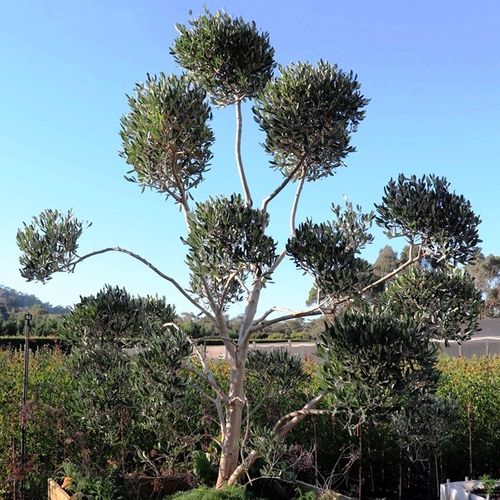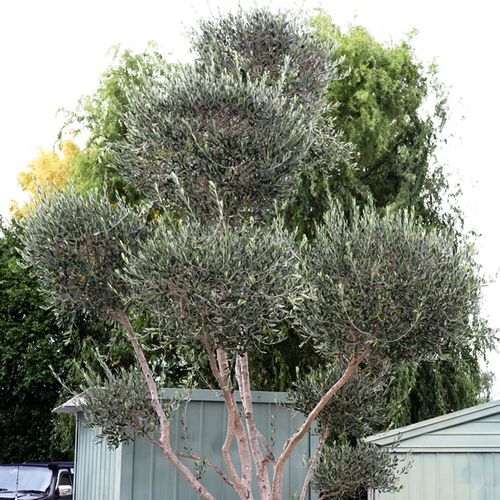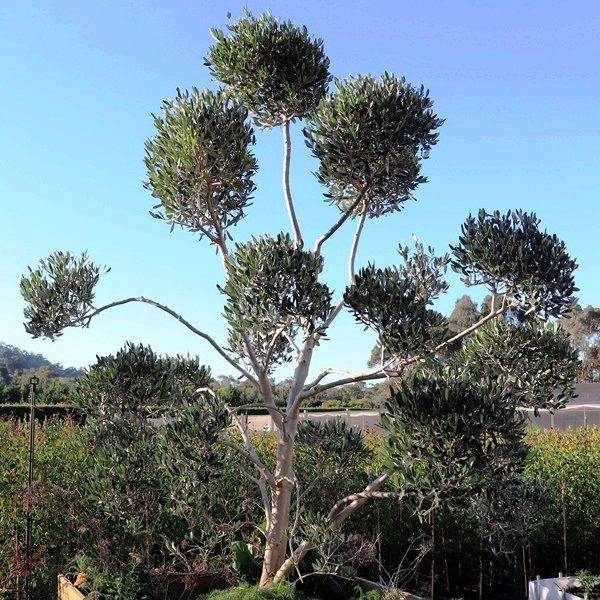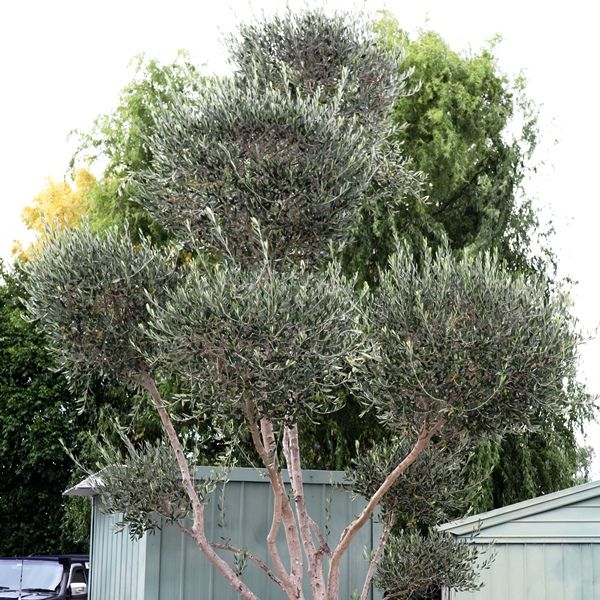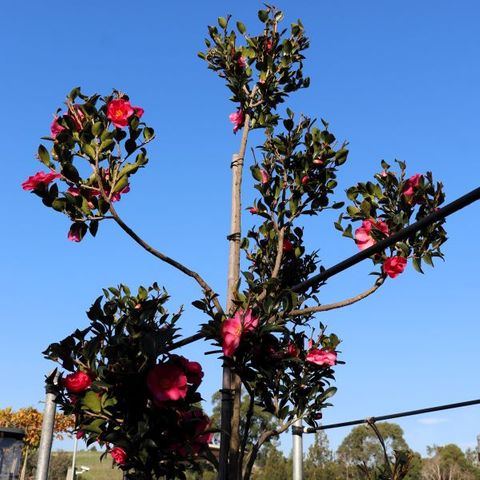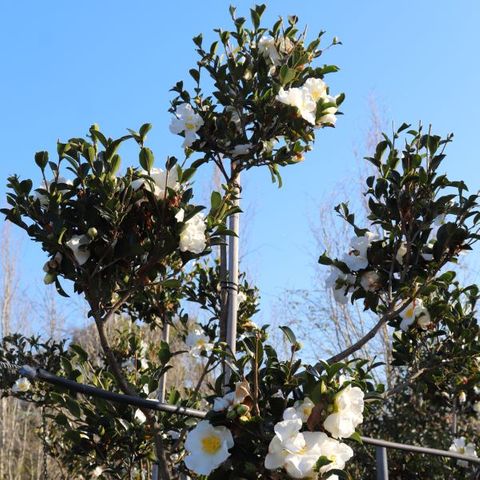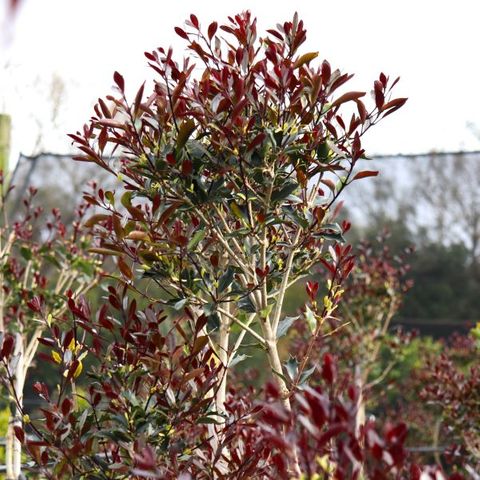Olea europaea Cloud
A cloud tree features a single plant with a series of cleared stems topped by rounded canopies, resembling clouds. Traditionally found in Chinese and Japanese gardens, these striking trees have become popular across various garden styles. With their unique silhouette, cloud trees make a bold statement and serve as an exceptional focal point in any landscape. Olives are long-lived, slow-growing evergreen trees that have attractive silver-grey foliage and a gnarled grey trunk with age. Small white flowers bloom in spring, followed by green fruit that ripens to black in autumn.
Cultural
Full sun is essential for healthy growth and fruit production in olive trees. Harvest fruit in late summer to early winter.
Soil:
Tolerates any well-drained soil, suitable for poor soil.
Aspect:
Full sun.
Maintenance:
Prune in late winter to maintain shape. Apply a slow-release fertiliser in spring. Though generally hardy, olive trees can be susceptible to pests like scale and olive lace bug-treat accordingly.
Water Requirements:
Drought tolerant once established but fruit development will benefit from supplementary watering. Will not tolerate waterlogged soil.
Seasonal Interest:
Autumn to winter fruiting.
Landscape Uses
Cloud trees are sure to wow viewers; their impressive form and structure make them the ideal feature tree. They are perfect specimens for pots but also work well when planted directly in the ground. Traditionally clipped for Chinese and Japanese style gardens, cloud trees are now used in many different garden styles, including formal, modern, and eclectic. Their clear trunks create space for lower underplantings such as grasses and groundcovers.
Dimensions
Cloud heights may vary. Please see TRADE PRICE LIST for topiary specifications, TRADE CUSTOMERS please login for access.


